Kneading through biblical narratives, copper emerges as a symbol of strength and purity, inviting a deeper exploration of its spiritual significance.
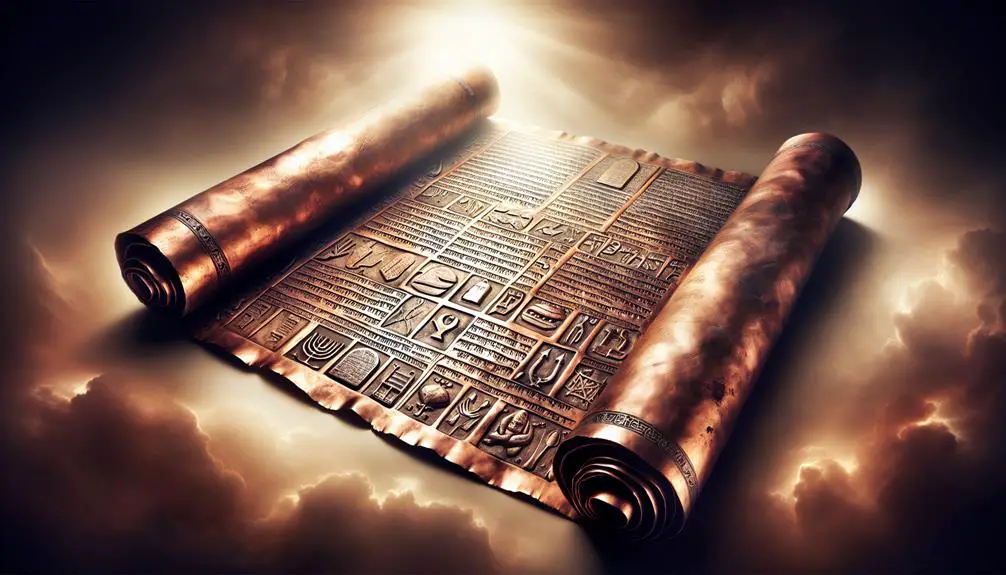
Copper in the Bible
In the vast narrative of the Bible, copper serves as a bridge between the divine and the earthly, hinting at resilience and purity in the face of trials. You'll find its significance weaved through sacred texts, from architectural marvels like the pillars of Solomon's Temple to the symbolic layers in religious rituals.
Its historical and spiritual implications enrich our understanding of ancient practices, yet you might wonder how these interpretations affect contemporary views on spirituality and materiality. Let's explore how this seemingly mundane metal holds keys to unlocking profound symbolic meanings that still resonate today.
Key Takeaways
- Copper symbolizes purity, strength, and divine craftsmanship in biblical narratives.
- It was crucial in the construction of the Tabernacle and Solomon's Temple.
- Associated with protection and spiritual purification in religious practices.
- Its enduring legacy bridges ancient biblical significance with contemporary spirituality and materiality.
Historical Significance of Copper
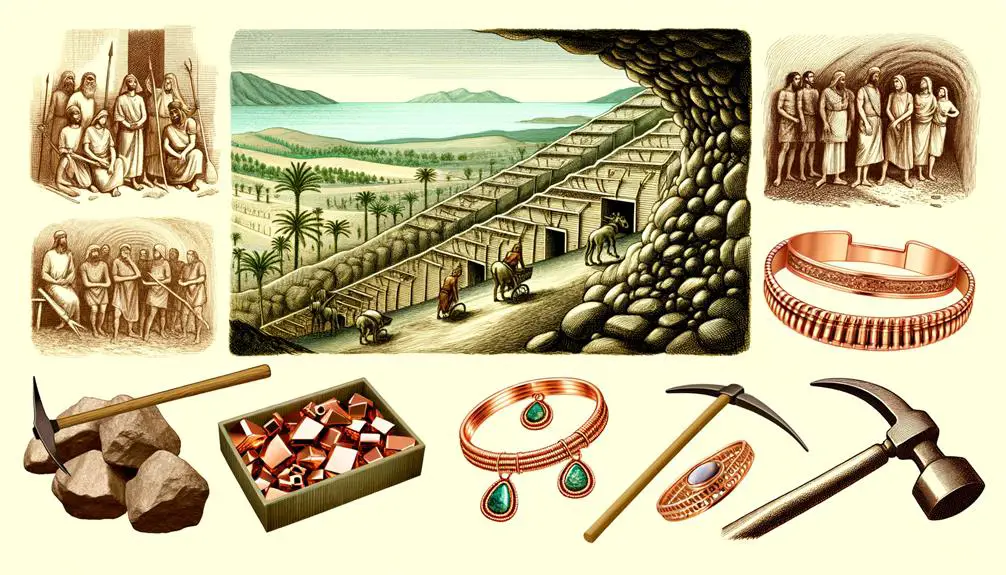
Copper's historical significance is deeply rooted in its extensive use and value across ancient civilizations, serving not only as a fundamental material for tools and weapons but also as a symbol of wealth and technological advancement. The development of mining techniques was pivotal, marking a transition from surface collecting to more sophisticated forms of extraction. You'll find that these advances weren't merely technical feats; they underscored copper's burgeoning role in the economy of these societies. The economic impact of copper mining extended far beyond the immediate vicinity of the mines, fostering trade networks that spanned continents.
As you delve deeper, you'll notice that the innovation in mining techniques allowed civilizations to access greater quantities of copper, which in turn fueled the expansion of metalworking skills. This period witnessed an unprecedented sophistication in the manufacture of copper artifacts, from mundane household items to intricate ceremonial objects. The economic implications were profound, as the control over copper resources and the ability to produce and trade copper goods became a cornerstone of economic power and social hierarchy.
Moreover, the strategic importance of copper mining sites can't be overstated. Control over these sites often led to conflicts, but also to the development of alliances and trade agreements. The economic impact of copper thus extended to shaping the geopolitical landscape of the ancient world, influencing the rise and fall of empires.
Copper in Sacred Texts

You'll find that copper isn't just a material presence in the Bible; it carries a profound religious significance that intertwines with the fabric of several narratives.
By examining biblical copper references, you discern how this metal symbolizes purity, strength, and divine craftsmanship.
This exploration reveals copper's multifaceted role in sacred texts, enhancing our understanding of its spiritual and practical applications in ancient religious practices.
Biblical Copper References
In exploring the sacred texts of the Bible, one finds that copper holds significant symbolic and practical roles, accentuating its importance in ancient rituals and constructions. The presence of copper in these texts not only underscores the metal's utility but also its spiritual symbolism. Copper mining and the creation of copper artifacts are frequently alluded to, showcasing the metal's widespread use and value in ancient societies.
The crafting of the Tabernacle and its furnishings, heavily reliant on copper, highlights its ceremonial use. Copper's role in the making of the Bronze Sea and pillars for Solomon's Temple underscores its architectural significance. References to copper in the context of trade and tribute payments reflect its economic value. Descriptions of copper shields and weapons denote its importance in warfare and defense.
These references collectively paint a picture of a metal deeply integrated into the fabric of biblical history.
Copper's Religious Significance
Throughout history, religious texts have often highlighted copper's significance, portraying it as a symbol of strength, durability, and divine beauty within sacred rituals and constructions. This metal's presence in scriptures is not merely decorative; it often symbolizes deeper theological themes, such as copper miracles and divine punishments, reflecting copper's dual nature in religious symbolism.
Aspect |
Significance |
|---|---|
Copper Miracles |
Sign of divine intervention |
Divine Punishments |
Tool for enacting divine will |
Sacred Rituals |
Used in objects symbolizing purity |
Constructions |
Represents stability and protection |
Copper's role extends beyond its physical properties, embodying spiritual values that have guided faith communities through centuries. Its depiction in sacred texts underscores its integral place not just in the physical edifices but also in the spiritual and moral framework of religious traditions.
Symbolism and Interpretations

You'll find that copper's presence in biblical texts isn't merely ornamental but carries profound divine associations and metaphorical meanings.
This metal's symbolic use underscores themes of purity, strength, and resilience, reflecting its physical properties.
Copper's Divine Associations
Several cultures have historically associated copper with divine entities, attributing to it symbolic meanings that range from purity to protection. This connection isn't just through artifacts but also through the essence of copper miracles and divine metallurgy, showing its profound significance across various traditions.
- Copper miracles: Seen as conduits for divine power, performing healing and wonders.
- Divine metallurgy: The process of working with copper symbolizes transformation and purity.
- Symbol of protection: Copper was often used in sacred spaces to ward off evil.
- Conduit of purity: Its antimicrobial properties linked copper to spiritual and physical purification.
In this context, copper serves not just as a material but as a bridge between the divine and the earthly, embodying a deep spiritual resonance.
Metaphorical Meanings Explored
Exploring beyond the tangible properties and divine associations of copper, we now examine its rich metaphorical meanings and interpretations within various cultural narratives. Copper allegories often reveal profound truths about human experience, while metaphorical transformations of copper symbolize resilience, purification, and spiritual growth.
Aspect |
Symbolism |
Cultural Context |
|---|---|---|
Resilience |
Copper's malleability |
Adapting to change |
Purification |
Removal of impurities |
Spiritual cleansing |
Spiritual Growth |
From copper to bronze |
Evolution of the soul |
These elements underscore copper's layered significance, inviting you to reflect on its broader implications. Beyond its physicality, copper serves as a mirror to our own transformations, embodying the journey from a raw, undefined state to one of strength, purity, and higher understanding.
Copper's Role in Rituals
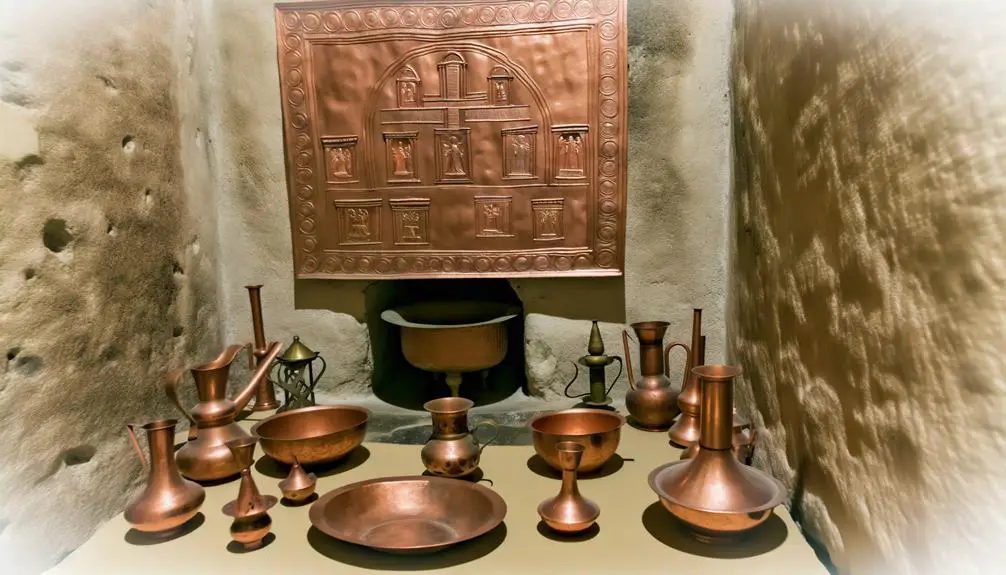
Copper's significant role in ancient rituals, particularly those described in biblical texts, underscores its cultural and religious importance throughout history. This metal's presence in ceremonial practices isn't merely coincidental; it's deeply entwined with the era's trade practices and health implications. Copper, due to its antimicrobial properties, was highly valued not only for its durability and beauty but also for its potential to safeguard against disease, an aspect crucial in communal and sacred settings.
As you delve deeper into the biblical references, you'll notice copper's versatile application in rituals:
- Consecration of Priests: Copper basins were used for washing, a symbolic act of purification before priestly duties commenced.
- Sacrificial Altars: These altars, often overlaid with copper, played a central role in offerings, highlighting copper's significance in facilitating a connection between the divine and the earthly.
- Ceremonial Instruments: Trumpets and cymbals made of copper were integral in worship, their resonant sounds believed to carry prayers to the heavens.
- Symbolic Offerings: Copper coins and artifacts, offered in various ceremonies, reflected the material's perceived value in spiritual transactions.
These practices, richly documented in historical and religious texts, offer a glimpse into the profound role copper played in shaping ritualistic traditions. Its incorporation into sacred rites wasn't merely for aesthetic or utilitarian reasons but was deeply rooted in the beliefs and values of the time. Understanding copper's application in these contexts provides a more nuanced appreciation of its place in ancient societies, bridging the gap between the material and the spiritual.
Architectural Uses in the Bible
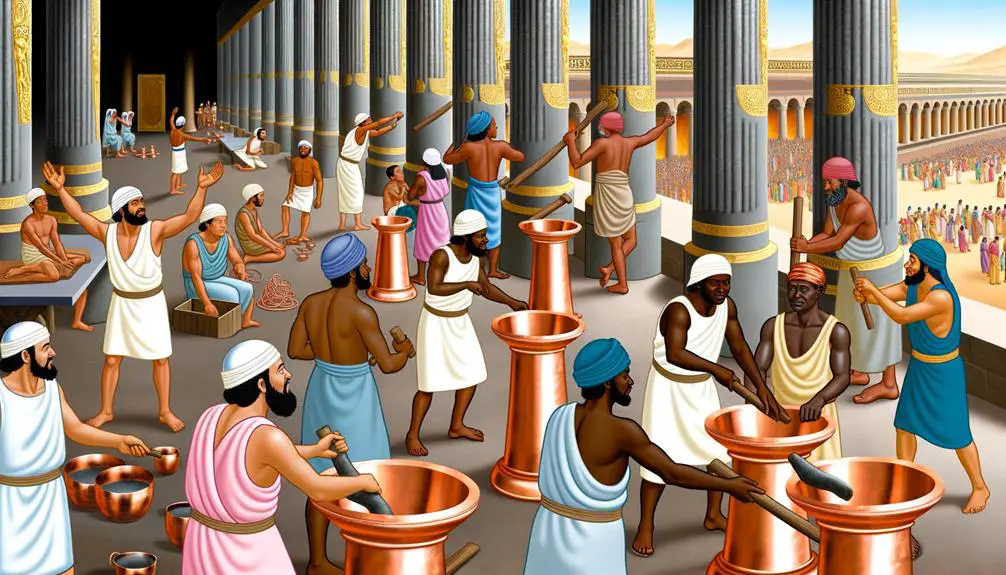
In biblical narratives, copper's architectural significance is illuminated through its extensive use in constructing sacred spaces and objects, revealing a deep-seated integration of the material in religious and societal structures. The deployment of copper and its alloys, such as bronze, wasn't merely for aesthetic appeal but bore a testament to the era's advanced construction techniques. These materials were pivotal in the creation of durable and symbolically rich components of tabernacles, temples, and various sacred vessels.
You'll find that copper's utility extended beyond mere functionality. Its presence in the architecture of the period spoke to its revered status; copper alloys were employed in crafting items which had both utilitarian and ceremonial value. The skilled artisans of the time harnessed sophisticated metallurgical knowledge to work with copper, indicating an early understanding of its corrosion resistance and strength, qualities that made it ideal for both structural supports and decorative elements.
Moreover, the application of copper in biblical architecture underscores an intersection between the divine and the material world. The metal's use in constructing the altar, basins, and other temple furnishings, as dictated in texts, wasn't arbitrary. It mirrored a divine instruction, imbuing these objects with a sense of sacredness and underscoring the material's significance in bridging the human with the spiritual.
The architectural uses of copper in the Bible, therefore, aren't merely historical footnotes but are emblematic of the material's enduring legacy in shaping human interaction with the divine realm. Through analyzing these ancient construction techniques and the strategic use of copper alloys, one gains insight into the sophisticated craftsmanship and the profound spiritual and societal implications of copper in biblical times.
Contemporary Reflections
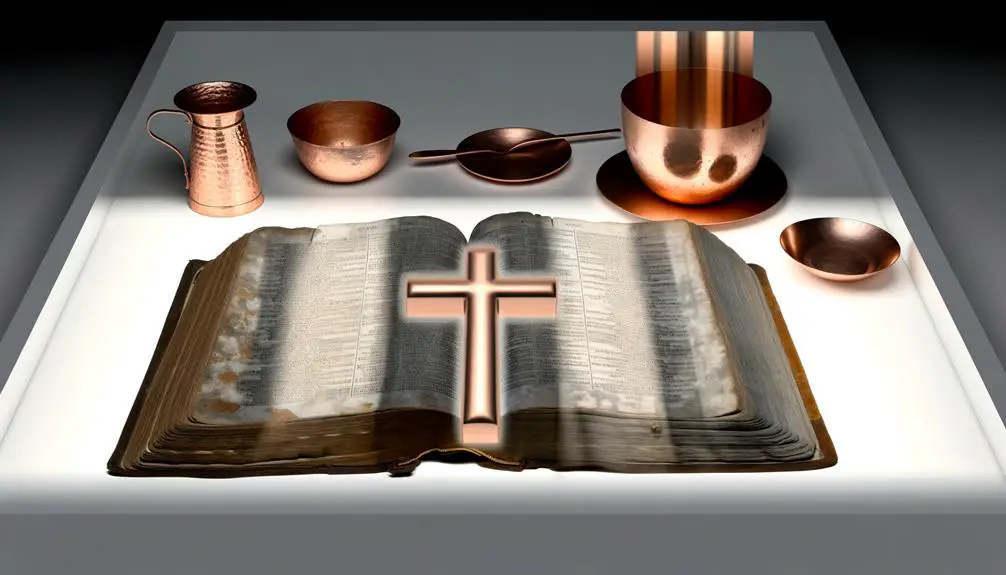
Reflecting on copper's historical significance, it's evident that its impact extends far beyond ancient architectural feats, shaping contemporary understandings of materiality and spirituality. This enduring metal has seamlessly transitioned into the modern era, where its applications and representations continue to evolve, yet retain a profound connection to its biblical roots. The examination of copper's role in today's world reveals a multifaceted narrative that intertwines technology, art, and faith in an intricate tapestry of cultural continuity and innovation.
- *Modern applications*: Copper's inherent properties, such as conductivity and antimicrobial qualities, have found critical uses in electrical wiring, renewable energy systems, and healthcare environments, reflecting its enduring utility and adaptability.
- *Artistic representations*: Contemporary artists often draw on copper's rich patina and malleability to explore themes of decay, renewal, and the divine, echoing its biblical symbolism.
- *Sustainable practices*: The recycling and repurposing of copper align with contemporary concerns for environmental stewardship, a principle that resonates with the biblical call to care for creation.
- *Cultural symbolism*: In modern times, copper continues to embody themes of strength, purity, and resilience, mirroring its scriptural significance and underscoring the metal's ongoing relevance in spiritual discourse.
Through these lenses, you can appreciate how copper's legacy isn't confined to the past but vibrantly alive in the present, bridging the gap between ancient texts and contemporary life. Its continued relevance underscores the timeless nature of its attributes and the enduring human fascination with this versatile metal.
Frequently Asked Questions
How Did Ancient Metallurgy Techniques Differ in the Extraction and Processing of Copper Compared to Modern Methods?
You're exploring how ancient metallurgy techniques for extracting and processing copper differ significantly from modern methods. Initially, ancient smelting innovations were rudimentary, relying on simple furnaces to extract metal from ore.
Alloy experimentation was common, blending copper with tin to create bronze, enhancing tool durability. Today's techniques are far more sophisticated, employing advanced machinery and chemical processes for extraction and purification, resulting in purer, more versatile metal products.
Are There Specific Geographical Locations Mentioned in the Bible Where Copper Was Mined, and How Do These Sites Compare to Today's Major Copper Mining Areas?
You're delving into the intriguing world of ancient copper mining locations, contrasting them with today's major hubs. Copper's symbolism, rich in history, intertwines with archaeological discoveries, shedding light on its significance.
These sites, once bustling in biblical times, may not align with current mining giants. Your analysis uncovers a fascinating narrative of evolution, from sacred texts to modern extraction methods, illustrating the dynamic journey of copper through the ages.
Aside From Its Mentioned Uses, Did Copper Have Any Medicinal or Health-Related Applications in Biblical Times?
In ancient times, beyond its practical uses, copper held medicinal and health-related significance. You'll find that its symbolism and spiritual connotations were deeply intertwined with its perceived healing properties.
Historically, cultures believed in copper's ability to ward off disease and promote wellness, a notion that mirrors the reverence seen in biblical accounts.
Analyzing these aspects, it's clear that copper's role extended beyond the material, touching on the spiritual and therapeutic realms.
How Did the Economic Value and Trade Dynamics of Copper in Biblical Times Compare to Other Metals Like Gold and Silver?
In biblical times, copper's economic value and trade dynamics were distinct from precious metals like gold and silver. Unlike these highly prized metals, copper's worth was rooted not just in its practical applications but also in its symbolism and religious significance.
While gold and silver symbolized wealth and divinity, copper was valued for its durability and its symbolic role in rituals and religious contexts, influencing its trade and use differently.
Were There Any Notable Figures or Groups in the Bible Specifically Associated With the Craftsmanship or Trade of Copper?
You're delving into the rich tapestry of history, where metals like copper not only served practical purposes but also held profound symbolism.
In the biblical narratives, figures such as Bezalel, appointed by Moses, stand out. He, alongside the tribe of Dan, exemplified craftsmanship in copper, imbuing their work with spiritual significance.
This fusion of artistry and faith highlights copper's unique role, intertwining economic and sacred dimensions within these ancient texts.
Conclusion
In analyzing copper's biblical journey, you've navigated its historical weight, sacred significance, and symbolic depth. You've seen how it shaped rituals, informed architecture, and echoed in contemporary reflections. This exploration reveals copper as not just a metal but a conduit of divine and human experience, intertwining materiality with spirituality.
As you reflect on copper's enduring legacy, consider its role as a testament to the intertwined nature of culture, faith, and innovation—a metal that mirrors the complexity and richness of human belief and practice.


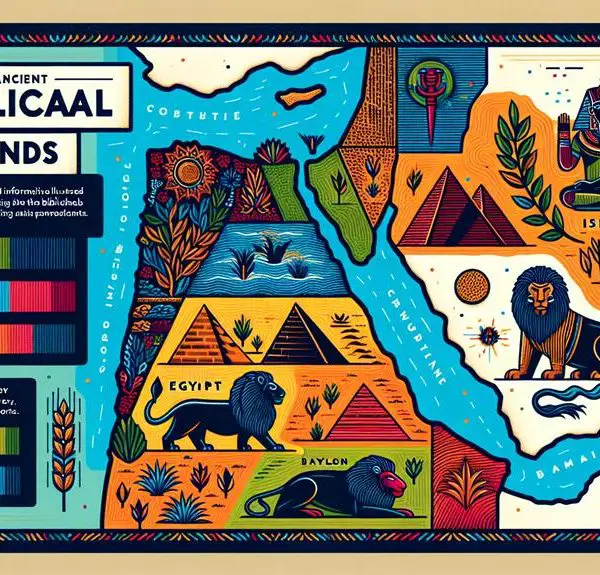
Sign up